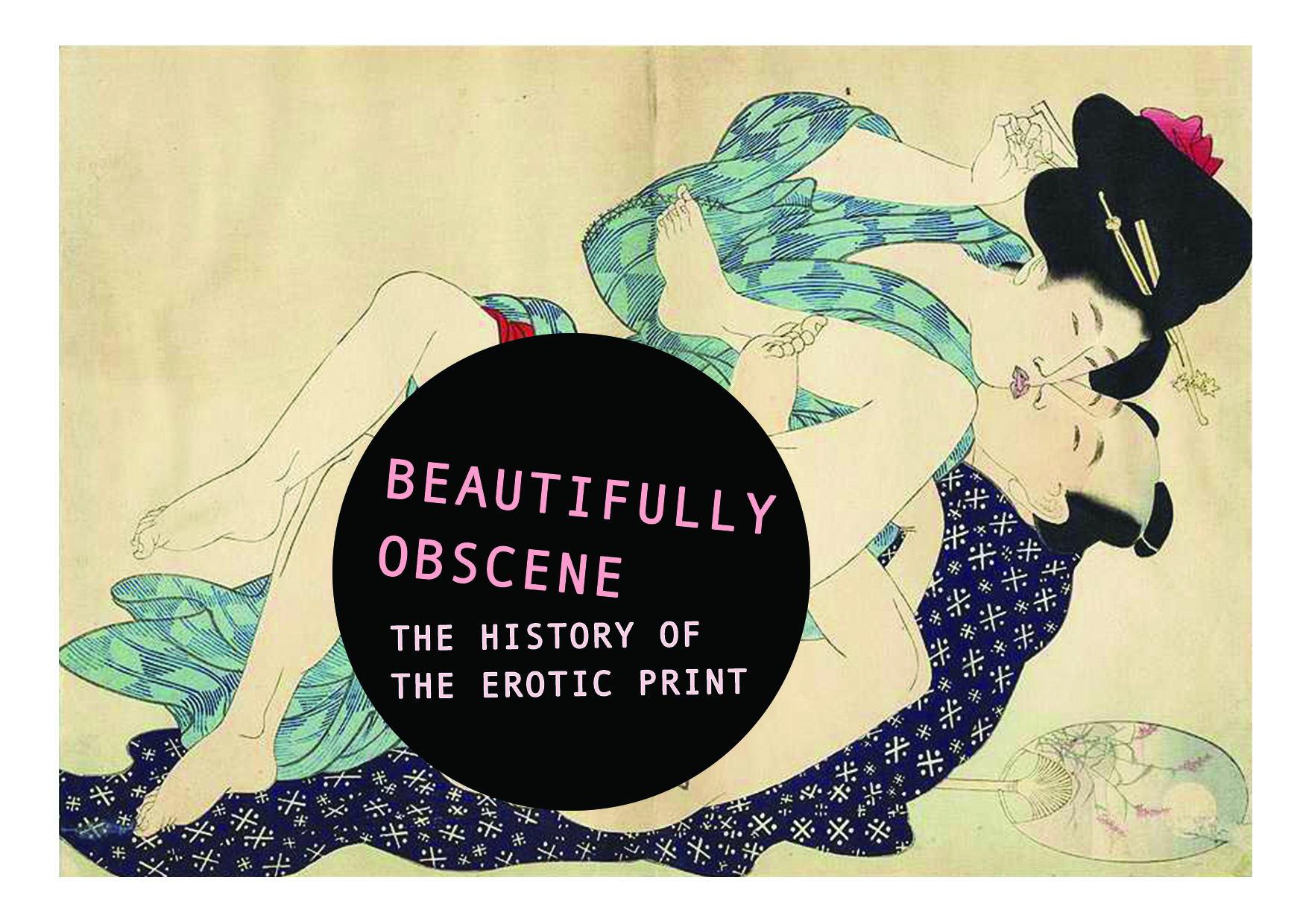Beautifully Obscene: The History of the Erotic Print
15 May – 12 June 2015
Monday – Friday, 9am-5pm, Closed Bank Holidays, Admission Free
Private View and Catalogue Launch: 15 May, 6-8pm
Studio 3 Gallery was pleased to present Beautifully Obscene: The History of the Erotic Print. Featuring over 30 works from across Europe and Japan and spanning the course of 500 years, the exhibition incorporated the different approaches used by artists in order to explore themes of sexuality, gender roles and power. The show explored Sir Kenneth Clark’s famous distinction between the socially-acceptable ‘nude’, and the socially-pejorative ‘naked’ body, with the majority of the works included arguably belonging to the latter category. Beautifully Obscene not only presented viewers with a comprehensive study of the aesthetics of the human form and sexuality, but also challenged our deeply ingrained discomfort with erotic visual representations, and suggested that beauty can in fact be found in the obscene.
Prints have historically been affordable ways to rapidly and economically reproduce and disseminate images, and this has created a rich legacy of erotic art. As well as showing how these themes have evolved across centuries and continents, this exhibition documented how the viewers’ relationship to the image has shifted over time. Many of the older examples in the show come from books or pamphlets where they could be viewed intimately and privately. More recent and contemporary works were intended to be shown in a gallery setting, so expand the scale of the body, confronting the viewer directly.
The featured artists have represented motifs such as the classical nude of Western Antiquity, modern French eroticism, through to the explicit prints of 18th century Japanese Shunga, and contemporary meditations on the human form and sexuality. This exhibition explored what we reveal and what we conceal, and the hidden educational and religious connotations that the erotic can harbor. It questions societal fears of the explicit and the pornographic, tackling themes of sexuality, gender and the role of the erotic in a diverse range of cultures and eras. The principle aim of Beautifully Obscene is to study the aesthetics of the human form and sexuality; in order to challenge the deeply ingrained preconceptions against erotic visual representations, and to emphasize that beauty can in fact be found in the obscene.
Artists include: Pietro Aquila, Pietro Santi Bartoli, Monika Beisner, Jan de Bisschop, Emma Bradford, Simone Cantarini, Stephen Chambers, Marianne Clouzot, Gabriel Dauchot, Angele Delasalle, Roland Delcol ,Amandine Dore, Tracey Emin, Brad Faine, Henri Fantin-Latour, Valentin Le Fevre, Ian Hamilton Finlay, Othon Friesz, Frans de Geetre, Paul Guiramand, Sarah Hardacre, William Hogarth, Anita Klein, Rudolf Koch, Antonio Lafrery, Martin Van Maele , Albert Marquet, Henri Matisse, Patricia Nik-Dad, Pablo Picasso, André Provot, Felicien Rops, Berthommé de Saint-André, Alex Varenne, Marcel Vertes , Denis Volx, Lucas Vorsterman, and Shane Wheatcroft.
This exhibition was organised by students from the Print Collecting and Curating Module at the University of Kent’s School of Arts. This course gives students the opportunity both to curate a museum-quality exhibition of their design and to acquire prints for the Kent Print Collection. In thinking about this exhibition, this year’s students wished to address the lack of erotic art in the permanent collection and to explore the rich and varied history of sensuality and eroticism depicted in print.
Image credit: Kitagawa Utamaro, Prelude to Desire (1799, later printing from a re-carved block-set c. 1890-1910)
